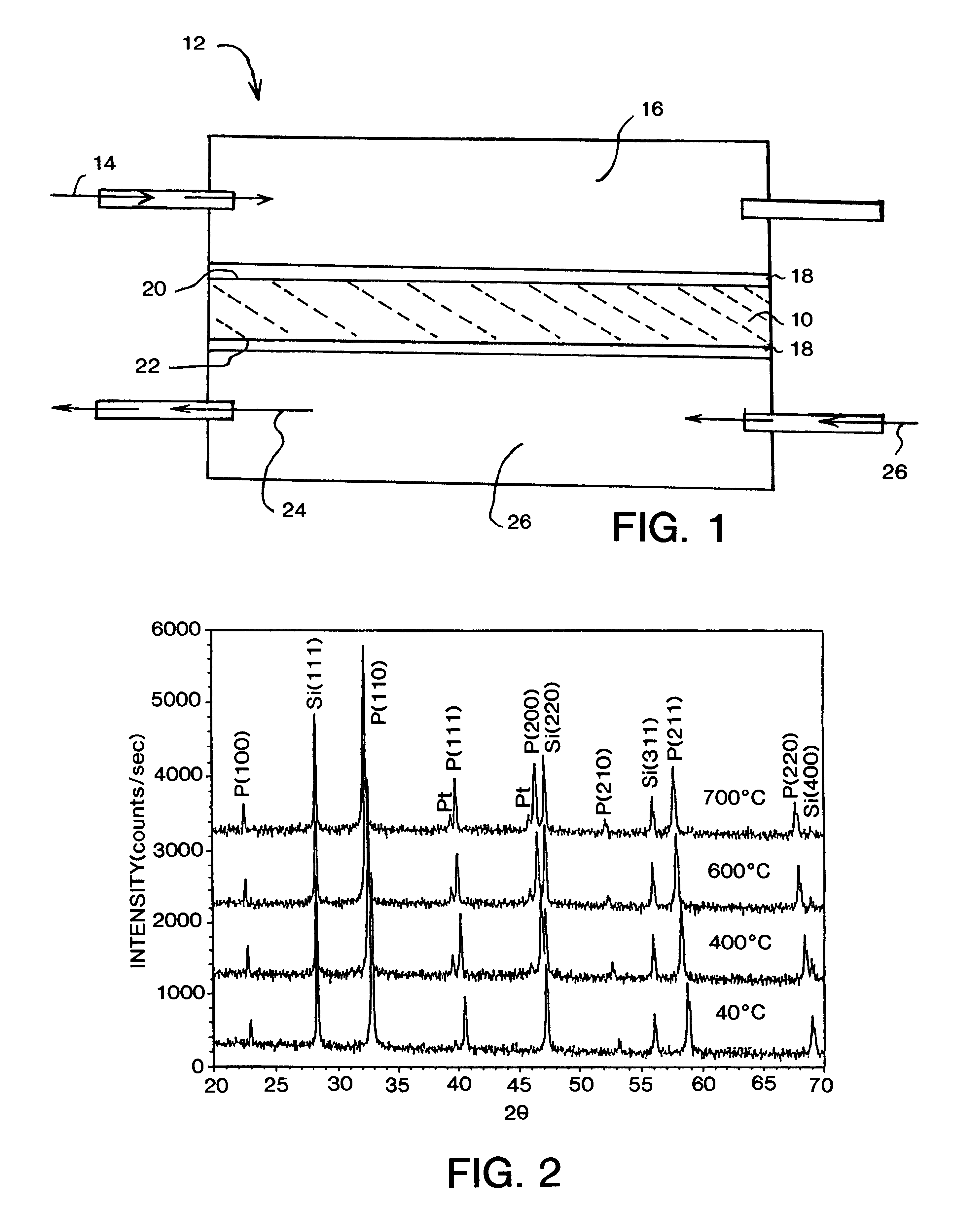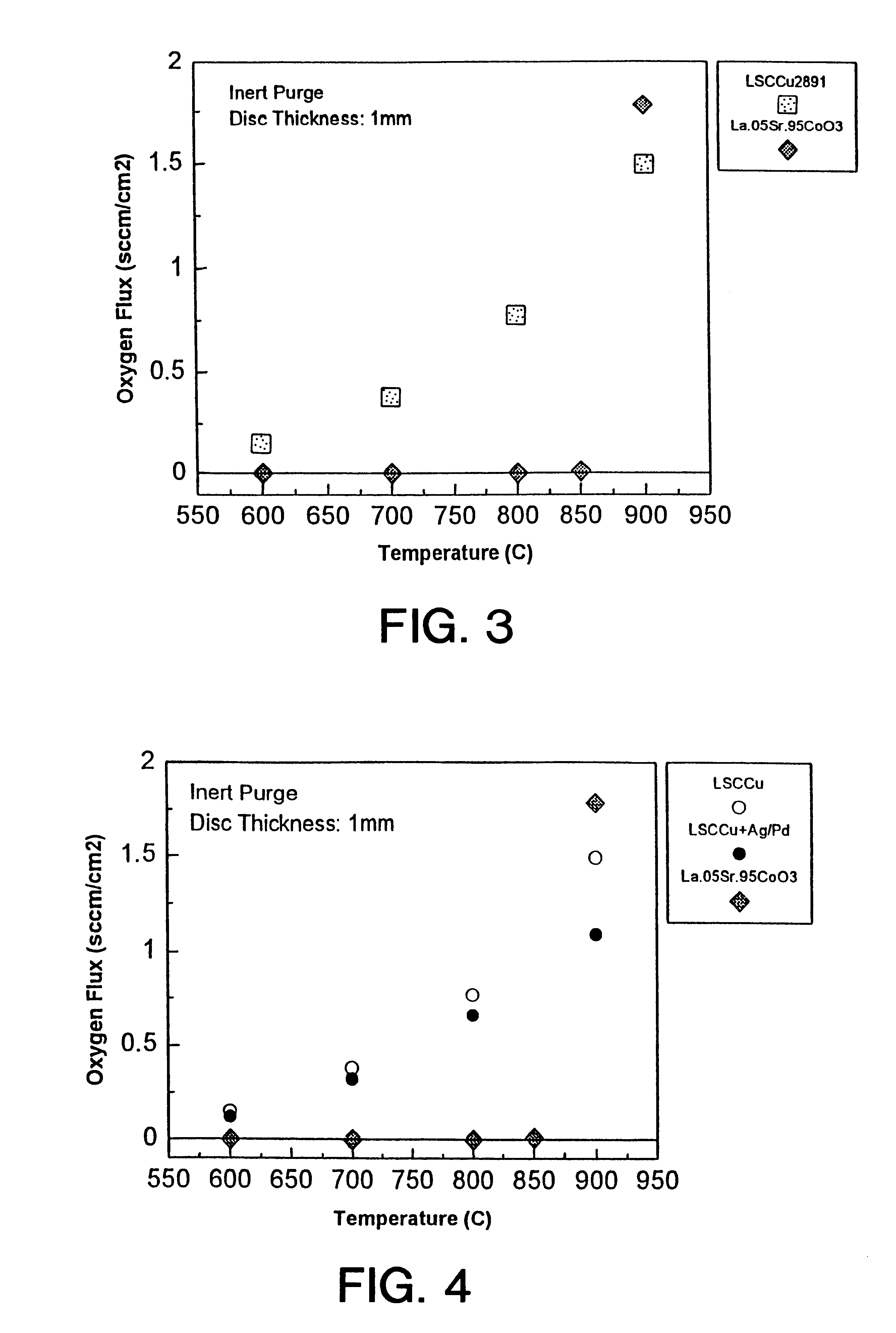Oxygen separation method using a mixed conducting cubic perovskite ceramic ion transport membrane
a technology of cubic perovskite ceramic and ion transport membrane, which is applied in the direction of catalyst activation/preparation, chemical/physical processes, inorganic chemistry, etc., can solve the problems of affecting the stability of the membrane and other components of the reactor, and the perovskite with a hexagonal crystalline structure are not effective for oxygen transpor
- Summary
- Abstract
- Description
- Claims
- Application Information
AI Technical Summary
Benefits of technology
Problems solved by technology
Method used
Image
Examples
example 1
X-ray diffraction (XRD) analysis of a ceramic pellet formed in accordance with the first embodiment described above, was performed using a Scintag (manufactured by Scintag, Inc. of Cupertino, Calif.) diffractometer with a hot stage attachment to analyze phase development at various temperatures. As illustrated in FIG. 2, the specimen maintained a cubic structure without phase transformation at all temperatures between 40.degree. C. and 700.degree. C. The silicon and platinum peaks in FIG. 2 are from an internal standard and sample holder, respectively.
The oxygen permeation rate of the sample was measured using a sintered disc having a thickness of 1.0 mm sealed in an alumina test cell with a silver paste. Permeation testing was conducted as a function of temperature using as a feed gas 20%, by volume, of oxygen, in nitrogen. Introduction of the feed gas was preceded by a helium purge.
A Hewlett Packard 5890 gas chromatograph (manufactured by Hewlett Packard Company of Wilmington, Del...
example 2
A one mm thick disc of the composition disclosed as the second embodiment above, was sealed in an alumina test cell with silver paste and permeation testing conducted as above. Table 4 records the detected oxygen flux.
FIG. 4 compares the oxygen flux achieved by the ceramic material formed in accordance with embodiment 2 with the respective oxygen flux of the ceramic material formed in accordance with embodiment 1 and the prior art ceramic material described above. While the addition of the metallic phase reduces the oxygen flux slightly, an oxygen flux is detected at temperatures as low as 600.degree. C. and a commercially useful oxygen flux is achieved at temperatures as low as 800.degree. C. Significantly, upon cooling, the sample remained intact without any cracking.
PUM
| Property | Measurement | Unit |
|---|---|---|
| temperature | aaaaa | aaaaa |
| temperature | aaaaa | aaaaa |
| temperature | aaaaa | aaaaa |
Abstract
Description
Claims
Application Information
 Login to View More
Login to View More - R&D
- Intellectual Property
- Life Sciences
- Materials
- Tech Scout
- Unparalleled Data Quality
- Higher Quality Content
- 60% Fewer Hallucinations
Browse by: Latest US Patents, China's latest patents, Technical Efficacy Thesaurus, Application Domain, Technology Topic, Popular Technical Reports.
© 2025 PatSnap. All rights reserved.Legal|Privacy policy|Modern Slavery Act Transparency Statement|Sitemap|About US| Contact US: help@patsnap.com


